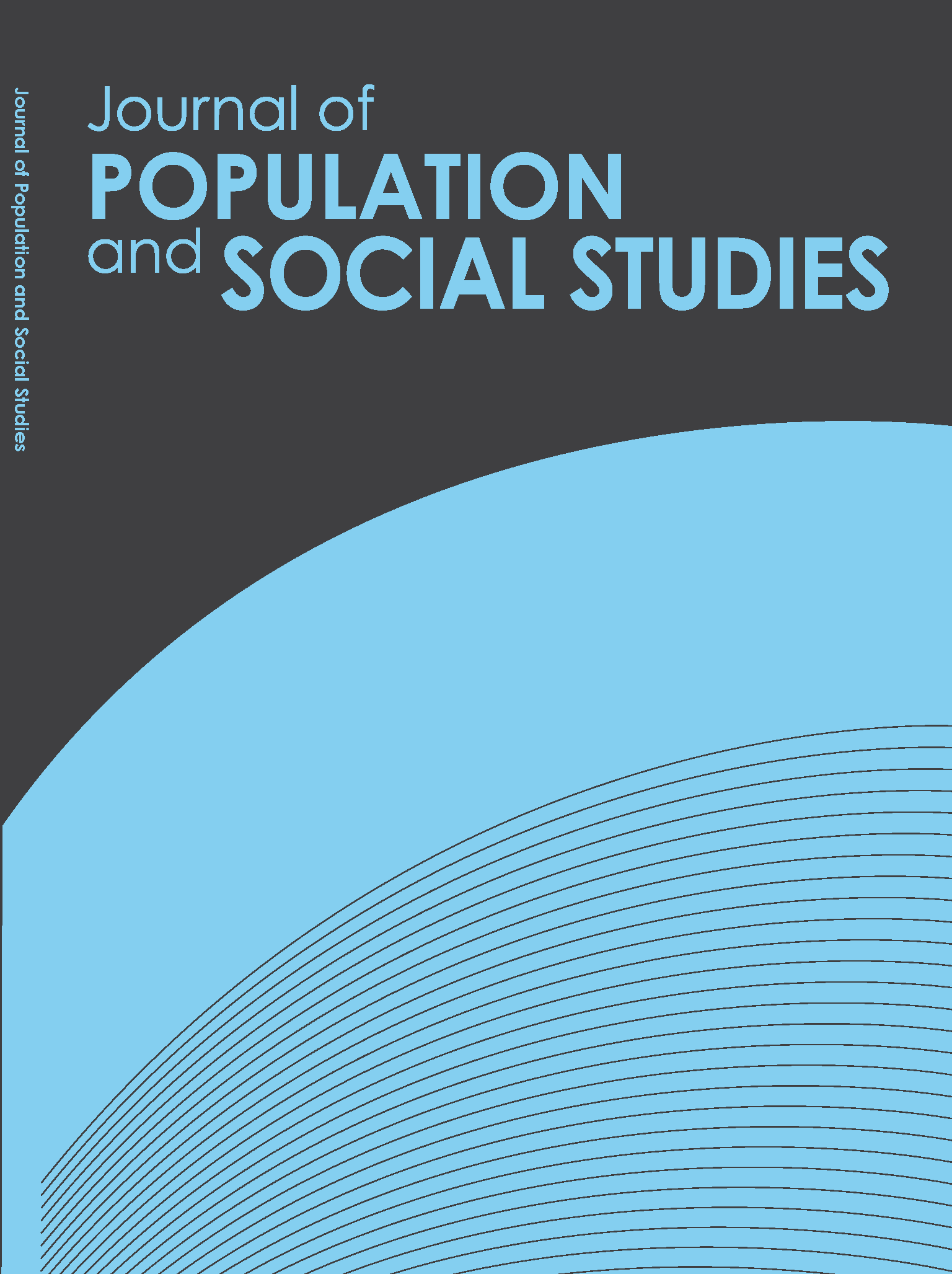Healthcare Seeking Behavior in Nigeria
Main Article Content
Abstract
This paper examines the healthcare seeking behavior of household members in Nigeria, specifically focusing on the sources of healthcare services. Traditional and orthodox sources have coexisted in the provision of healthcare services, but this study goes further to show that orthodox services can be accessed through trained healthcare professionals (HCPs) or patent medicine vendors (PMVs); traditional services are mainly offered by herbalists. There are Christians and Muslims who consult faith homes/centers that operate purely on faith and prayer for healing. An estimation model, which involved health-seeking decision, was applied and it was estimated through nested multinomial logit (NML) technique. Data were drawn from the 2010 Harmonised Nigeria Living Standards Survey (HNLSS) conducted by the National Bureau of Statistics. Results demonstrate that individuals tend to consult traditional, PMVs and churches/mosques ahead of HCPs as a result of age and urban/rural locations. The demand for HCP care increases with household income as well as the number of household members.
Article Details
References
• Agyare, C., Mensah, A., & Osei-Asante, S. (2006). Antimicrobial activity and phytochemical studies of some medicinal plants from Ghana. Boletin Latinoamericano y del Caribe de Plantas Medicinales y Aromaticas, 5(6), 113-117.
• Awoyemi, T., Obayelu, O. & Opaluwa, H. (2011). Effect of distance on utilization of health care services in rural Kogi State, Nigeria. Journal of Human Ecology, 35(1), 1-9.
• Begashaw, B. & Tesfaye, T. (2016). Healthcare Utilization among Urban and Rural Households in Esera District: Comparative Cross-sectional Study. American Journal of Public Health Research, 4(2), 56-61.
• Bello, R. (2005). Determinant(s) of demand for traditional method of health care services in Osun State, Nigeria. Indian Journal of Social Development, 5(2), 203-271.
• Commission on Macroeconomics and Health. 2001. Macroeconomics and health: Investing in health for economic development. Geneva: World Health Organisation.
• Craigwell, R., Bynoe, D., & Lowe, S. (2012). The effectiveness of government expenditure on education and health care in the Caribbean. International Journal of Development Issues, 11(1), 4-18. doi: https://doi.org/10.1108/14468951211213831.
• Dalal, A. K. (2005). Integrating traditional services within primary health care. Journal of Health Management. 7(2), 249-262. doi: https://doi.org/10.1177/097206340500700206.
• Damrongplasit, K. & Wangdi, T. (2016). Healthcare utilization, bypass, and multiple visits: The case of Bhutan. International Journal of Health Economics and Management, 17(1), 51-81. doi: https://doi.org/10.1007/s10754-016-9194-4.
• Gotsadze, G., Bennett, S., Ranson, K. & Gzirishvili, D. (2005). Health care-seeking behaviour and out-of-pocket payments in Tbilisi, Georgia. Health Policy and Planning, 20(4), 232-242. doi: https://doi.org/10.1093/heapol/czi029.
• Gujarati, D. (2004). Basic econometrics. London: McGraw-Hill.
• Hensher, D. & Greene, W. (2002). Specification and estimation of the nested logit model: Alternative normalisations. Transportation Research 36B, 1-17. doi: https://doi.org/10.1016/s0191-2615(00)00035-7.
• Hjortsberg, C. (2003). Why do the sick not utilise health care? The case of Zambia. Health Economics, 12(9), 755-770. doi: https://doi.org/10.1002/hec.839.
• Hoffman, S. & Duncan G. (1998). A comparison of choice-based multinomial and nested logit models: The family structure and welfare use decisions of divorced or separated women. The Journal of Human Resources, 23(4), 550-562.
• Jegede, A. & Odumosu, O. (2003). Gender and health analysis of sexual behaviour in South-Western Nigeria. African Journal of Reproductive Health [La Revue Africaine de la Santé Reproductive], 7(1), 63-70. doi: https://doi.org/10.2307/3583346.
• Leive, A. & Xu, K. (2007). Coping with the out-of-pocket health payments: Applications of engel curves and two-part models in six African countries. Geneva: World Health Organization, HSS/HSF/DP.07.7.
• Lemma, T. (2013). Demand for traditional health care services in rural Ethiopia. Asian Journal of Research in Business Economics and Management, 3(3), 31.
• Malu, A. (2010). Universities and medical education in Nigeria. Nigerian Medical Journal, 51(2), 84-88.
• Musah, K. & Kayode, O. (2014). Preliminary assessment of healthcare seeking behaviour among users of primary health care facilities in Ilorin Metropolis, Kwara State, Nigeria. IOSR Journal of Nursing and Health Science (IOSR-JNHS), 3(4), 31-35. doi: https://doi.org/10.9790/1959-03413135.
• Odaman, O. & Ibiezugbe, M. (2014). Health seeking behavior among the elderly in Edo Central Nigeria. International Review of Social Sciences and Humanities, 7(1), 201-210.
• Olasehinde, N. & Olaniyan, O. (2017). Determinants of household health expenditure in Nigeria. International Journal of Social Economics, 44(12), 1694-1709. doi: https://doi.org/10.1108/ijse-12-2015-0324.
• Onwujekwe, O., Uzochukwu, B., Obikeze, E., Okoronkwo, I., Ochonma, O., Onoka, C., … Okoli, C. (2010). Investigating determinants of out-of-pocket spending and strategies for coping with payments for healthcare in Southeast Nigeria. BMC Health Services Research, 10:67. Retrieved from http://www.biomedcentral.com/1472-6963/10/67 on 02/08/2011
• Oosthuizen, G. (1992). The healer-prophet in Afro-Christian churches, (Vol. 3). New York: Brill.
• Owoeye, S. (2012). Healing in some Pentecostal Churches in South-Western Nigeria. European Scientific Journal, 8(30), 95-113.
• Sekhar, R. (2006). Influence of income and education on household health expenditure: The case of tribal Orissa. The Orissa Journal of Commerce, 28, 133-144.
• Séne, L. M., & Cissé, M. C. (2015). Catastrophic out-of-pocket payments for health and poverty nexus: Evidence from Senegal. International Journal of Health Economics and Management, 15(3), 307-328. doi: https://doi.org/10.1007/s10754-015-9170-4.
• Su, T., Kouyaté, B. & Flessa, S. (2006). Catastrophic household expenditure for health care in a low-income society: A study from Nouna District, Burkina Faso. Bulletin of the World Health Organization, 84(1), 21-27. doi: https://doi.org/10.2471/blt.05.023739.
• Suhrcke, M., McKee, M., Arce, R. S., Tsolova, S. & Mortensen, J. (2006). Investment in health could be good for Europe's economies. BMJ: British Medical Journal, 333(7576), 1017-1019. doi: https://doi.org/10.1136/bmj.38951.614144.68.
• Tegegne A. & Legese, M. (2014). The urban poor and health seeking behaviour: The healthcare seeking behaviour of the ‘poorest of the poor’ in Addis Ababa, Ethiopia. Global Journal of Human-Social Science, 14(6).
• Treleaven, E., Liu, J., Prach, L. & Isiguzo, C. (2015). Management of paediatric illnesses by patent and proprietary medicine vendors in Nigeria. Malaria Journal, 14, 232. doi: https://doi.org/10.1186/s12936-015-0747-7.
• Yip, W., Wang, H. & Liu, Y., (1998). Determinants of patient choice of medical provider: A case study in rural China. Health Policy and Planning, 13(3), 311-322. doi: https://doi.org/10.1093/heapol/13.3.311.


